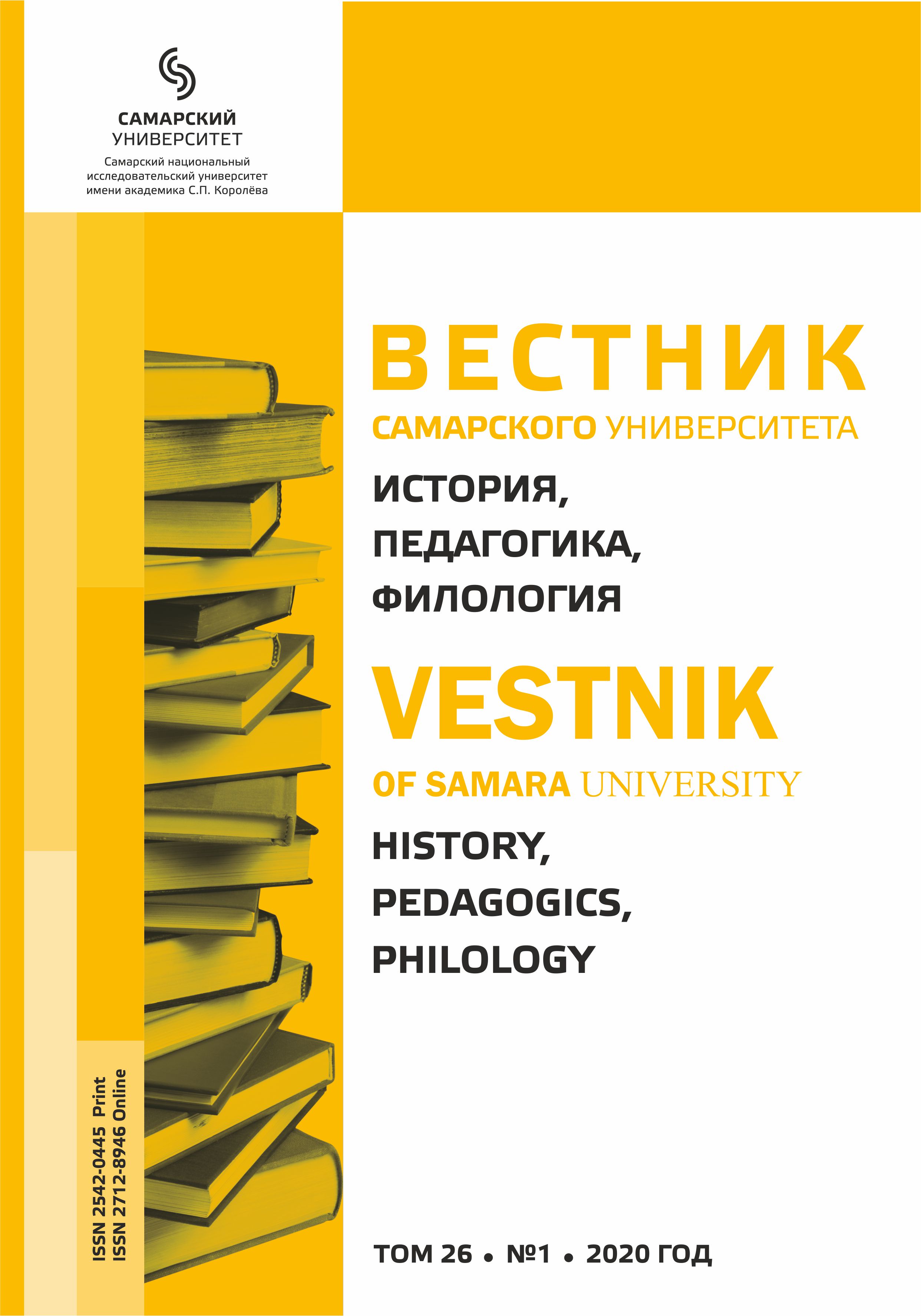«Подумаем, подумаем, братцы»: народная религиозность до и после революции 1917 года (на примере Среднего Поволжья)
- Авторы: Кобозева З.М.1, Протасова А.В.1
-
Учреждения:
- Самарский национальный исследовательский университет имени академика С.П. Королева
- Выпуск: Том 26, № 1 (2020)
- Страницы: 26-30
- Раздел: Статьи
- URL: https://journals.ssau.ru/hpp/article/view/7723
- DOI: https://doi.org/10.18287/2542-0445-2020-26-1-26-30
- ID: 7723
Цитировать
Полный текст
Аннотация
В статье авторы предприняли попытку рассмотрения актуальной проблемы эволюции взаимоотношений власти и церкви на повседневном уровне «народной веры» без хронологического водораздела в виде событий революции 1917 года. «Народная вера» – это своего рода «апокриф», порожденный повседневной адаптацией тех или иных религиозных учений «паствой» с ее уровнем образования и культурного развития. Под «паствой» в границах данной работы понимаются представители простых сословий в дореволюционный период, мещане и крестьяне, и простые жители Самарского края в советский период, то есть так называемый «маленький человек». Этот «маленький человек» в таком многонациональном регионе, как Среднее Поволжье, был в значительной мере охвачен, несмотря на русификацию и христианизацию (православную), конфессиональными и национальными традициями. В конце XIX – начале XX в., до революции 1917 года, «религиозные гонения» по отношению к религиозному инакомыслию проявлялись в таких практиках церковной и светской власти, как процедуры увещеваний, изъятия литературы, предметов культа, в ригоризме словесной культуры, когда использовались оскорбительные коннотации в делопроизводстве в отношении старообрядцев и сектантов. После революции 1917 года особый интерес вызывает период, когда только происходило конструирование идеологии. И несмотря на идеологический атеизм новой советской власти, в отношении сектантов 1920-е годы были периодом некоторой терпимости. Этот период продолжался до 1930-х гг., когда советская власть уже четко повела антирелигиозную и антисектантскую политику. Изучение народной религиозности представителей Среднего Поволжья в период социальных потрясений необходимо для дальнейшего совершенствования религиозно-государственных отношений и формирования духовного сознания граждан, что подтверждает научную актуальность данной темы. Результаты проделанной работы доказывают, что повседневность в ракурсе рассмотрения, как это принято в методах этнографии, «изнутри» показывает, что картина мира человека не может поменяться из-за смены политического строя мгновенно. Человек может адаптироваться к новым «правилам игры», но то, что мы называем «народной верой», – это гораздо глубже, это то, как человек ведет себя наедине с самим собой.
Об авторах
З. М. Кобозева
Самарский национальный исследовательский университет имени академика С.П. Королева
Автор, ответственный за переписку.
Email: morenov@ssau.ru
ORCID iD: 0000-0003-4080-8349
доктор исторических наук, профессор исторического факультета
А. В. Протасова
Самарский национальный исследовательский университет имени академика С.П. Королева
Email: morenov@ssau.ru
ORCID iD: 0000-0002-4733-0301
магистрант исторического факультета, кафедра российской истории
Список литературы
- Аксенов 2019 – Аксенов В. Народная религиозность и образы духовенства в годы Первой мировой войны и революции // Государство, религия, церковь в России и за рубежом. 2019. № 1–2. С. 272–303. DOI: http://doi.org/10.22394/2073-7203-2019-37-1/2-272-303.
- Гуревич 1999 – Гуревич А.Я. Избранные труды. Т. 2. Средневековый мир. Москва; Санкт-Петербург: Университетская книга, 1999. 560 с. URL: http://b-ok2.org/book/721793/7a7525.
- Ершова 2016 – Ершова Г.Г. Изучение духовных представлений и практик как междисциплинарная проблема // Стены и мосты. IV: междисциплинарные исследования в истории: материалы междунар. науч. конф. / Российский государственный гуманитарный университет, 22 мая 2015 года. Москва: Академический проект, 2016. 255 с. URL: http://www.rsuh.ru/upload/main/interhumanities/science/Sbornik_Steny_i_mosty_2015.pdf.
- Катькова, Мышенцев 2011 – Катькова В.В., Мышенцев Н.П. Старообрядческие общины Самарской губернии: численность, структура, динамика развития // Известия научного центра Российской академии наук. 2011. Т. 13. № 3. С. 47–54. URL: http://www.elibrary.ru/item.asp?id=16514866.
- Кобозева 2016 – Кобозева З.М. «Модное платье» & «Как работать с текстом»: междисциплинарные подходы в историческом исследовании // Стены и мосты. IV: поле междисциплинарного взаимодействия исторического знания с естественными и социально-гуманитарными науками: материалы междунар. науч. конф. Москва: Академический проект, 2016. С. 213–224. URL: http://www.rsuh.ru/upload/main/interhumanities/science/Sbornik_Steny_i_mosty_2015.pdf.
- Миронов 2003 – Миронов Б.Н. Социальная история России. Т. 2. Санкт Петербург, 2003. 566 с. Available at: http://bookre.org/reader?file=1242950.
- Панченко 2004 – Панченко А.А. Христовщина и скопчество: фольклор и традиция русских мистических сект. Москва, 2004. 544 с.
- Подмарицын 2015 – Подмарицын А.Г. Особенности и формы проявления народной религиозности в средне-волжских епархиях Русской православной церкви (1943–1965 гг.). Самара, 2015.
- Репина 2009 – Репина Л.П. «Новая историческая наука» и социальная история. Москва, 2009. 320 с. URL: https://elibrary.ru/item.asp?id=21990914.
- Смекалин 2016 – Смекалин А.С. Государственно-конфессиональные отношения в СССР. 1917–1930 г.
- // Российское право: образование, практика, наука.2016. № 5. С. 17–23. URL: http://elibrary.ru/item.asp?id=27686474.
- Фабинский 2012 – Фабинский М.В. Православные верующие в России перед Октябрьской революцией // Молодой ученый. 2012. № 4. С. 335–339. URL: http://moluch.ru/archive/39/4619.
Дополнительные файлы













